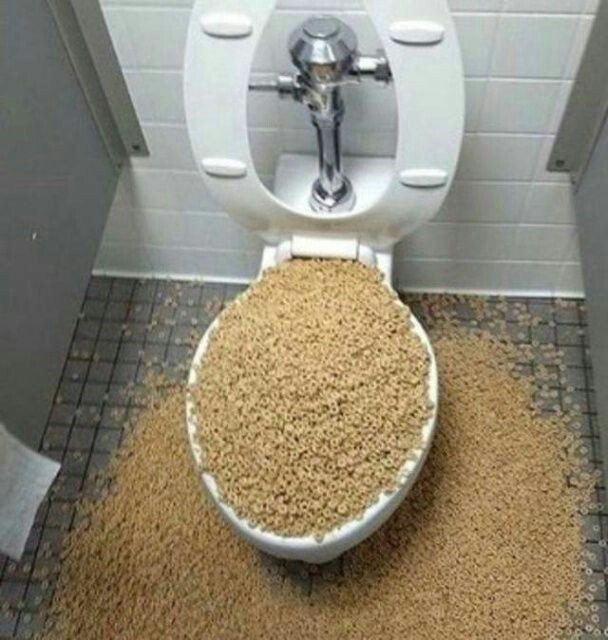The publisher is making a few good pointers on the subject of Flushing Food Down the Toilet? as a whole in the article directly below.

Introduction
Many individuals are frequently confronted with the predicament of what to do with food waste, especially when it concerns leftovers or scraps. One typical inquiry that arises is whether it's alright to flush food down the bathroom. In this write-up, we'll delve into the reasons why people may consider purging food, the effects of doing so, and different techniques for appropriate disposal.
Reasons that individuals could take into consideration flushing food
Lack of awareness
Some people may not understand the potential injury brought on by flushing food down the bathroom. They might wrongly think that it's a safe method.
Benefit
Flushing food down the toilet may seem like a fast and very easy option to disposing of undesirable scraps, specifically when there's no neighboring trash can offered.
Laziness
In some cases, individuals might merely choose to flush food out of sheer negligence, without thinking about the consequences of their actions.
Effects of flushing food down the toilet
Ecological impact
Food waste that ends up in rivers can contribute to air pollution and damage water environments. Furthermore, the water made use of to purge food can strain water sources.
Plumbing concerns
Purging food can result in blocked pipelines and drains pipes, causing expensive pipes repair services and hassles.
Kinds of food that must not be flushed
Fibrous foods
Foods with coarse structures such as celery or corn husks can get entangled in pipelines and cause blockages.
Starchy foods
Starchy foods like pasta and rice can soak up water and swell, resulting in obstructions in pipes.
Oils and fats
Greasy foods like bacon or cooking oils need to never ever be purged down the bathroom as they can strengthen and cause obstructions.
Appropriate disposal methods for food waste
Using a garbage disposal
For homes furnished with garbage disposals, food scraps can be ground up and purged with the pipes system. Nevertheless, not all foods are suitable for disposal in this fashion.
Recycling
Certain food product packaging products can be recycled, minimizing waste and lessening environmental impact.
Composting
Composting is an eco-friendly way to take care of food waste. Organic products can be composted and used to enrich soil for gardening.
The relevance of appropriate waste management
Lowering ecological damage
Proper waste administration methods, such as composting and recycling, aid decrease air pollution and preserve natural resources for future generations.
Shielding plumbing systems
By avoiding the practice of flushing food down the toilet, house owners can protect against costly plumbing repair work and preserve the stability of their plumbing systems.
Final thought
To conclude, while it may be appealing to flush food down the toilet for benefit, it is very important to recognize the possible repercussions of this activity. By taking on correct waste administration methods and disposing of food waste responsibly, people can add to much healthier plumbing systems and a cleaner environment for all.
FLUSH FOOD DOWN THE TOILET?
FLUSHING FOOD CAN CAUSE BLOCKED DRAINS IN YOUR HOME
All of the plumbing fixtures in your home are connected to the same sewer pipe outside of your home. This outdoor sewer pipe is responsible for transporting all the wastewater from your home to the Council sewer mains. Even small pieces of food that go down the kitchen sink can cause problems for your sewer. It should therefore be obvious that flushing larger bits of food, such as meat, risks a clog in either the toilet itself or the sewer pipes. Flushing greasy food is even more problematic because oil coagulates when it cools, coating the interior lining of your pipes.
THE TOILET IS NOT A BIN
Food isn’t the only thing that people shouldn’t be flushing down the toilet. People use the toilet to dispose of all kinds of things such as tampons, makeup wipes, dental floss, kitty litter and even underwear. Water goes to great lengths to educate residents about the high costs and stress placed on wastewater treatment systems simply from people flushing the wrong stuff down the toilet. It costs taxpayers millions of dollars each year, and homeowners thousands in blocked drain repairs.
FLUSHING FOOD IS A WASTE OF WATER
Flushing food is a waste of our most precious resource - water. In June this year Level 1 water restrictions were introduced to protect water supply from drought conditions. Much of New South Wales continues to be affected by prolonged drought with recent figures revealing up to 97 per cent of the state remains in drought. Depending on whether you have a single or dual flush toilet, every single flush uses between five and 11 litres of water. In the current climate this is a huge amount of water to be wasting on flushing food that should be placed in the bin (or better yet, the compost).
https://www.jabplumbingsolutions.com.au/blog/can-you-flush-food-down-the-toilet

Do you like more info about Flushing Food Down the Toilet?? Write feedback below. We'd be delighted to know your thinking about this page. We hope that you visit us again in the future. Those who appreciated our blog post please be sure to share it. Thanks a lot for going through it.
View